The entertainment industry is booming, and many people are turning to streaming services to watch content at home. If you’re looking for the best streaming platform, you’ll have a hard time choosing between several services, among which Roku and Fire TV stand out. So, which one exactly should you buy? Here’s our full Roku vs Fire TV comparison to help you decide.
Roku and Fire TV are two major players in the TV and streaming ecosystem, used by millions of people around the world. If you didn’t already know, Fire TV is owned by Amazon, and Roku took the streaming world by storm when it was founded in the early 2000s, and now has over 100 million active users.
Roku vs Fire TV: User Experience
Starting with the user experience, the Fire TV UI looks quite modern. It is a content-centric Google TV-like interface but still different in some ways. As a platform owned by Amazon, it promotes its content, such as TV series and movies from Prime Video and Freevee.

Navigating the Fire TV user interface is pretty straightforward with the Profile, Home, TV, and Favorites buttons on the middle row. Next up are TV and movie recommendations below.
Roku, on the other hand, takes a simple approach where user interface elements and menus aren’t spread across the screen. Instead, there’s a drop-down list on the left sidebar, with the options related to it on the right. So, for example, My Feed will show you recommendations while Streaming Channels will show you all the channels you can stream.
In terms of user interface, I like the Fire TV, but when it comes to features and the ability to easily find what you’re looking for, Roku triumphs over the Fire TV. I can see that a benefit for the elderly people. As for which one is more reliable, it’s a tie, again. The decision to choose between Roku and Fire TV in terms of user interface depends on the age group that will be using it.
Winner: Tie
Roku vs Fire TV: Recommendations
Given that Fire TV is part of Amazon, expect it to push many Amazon-related services and content right under your nose. Fire TV recommendations are largely based on your viewing history and trends from Prime and other apps.
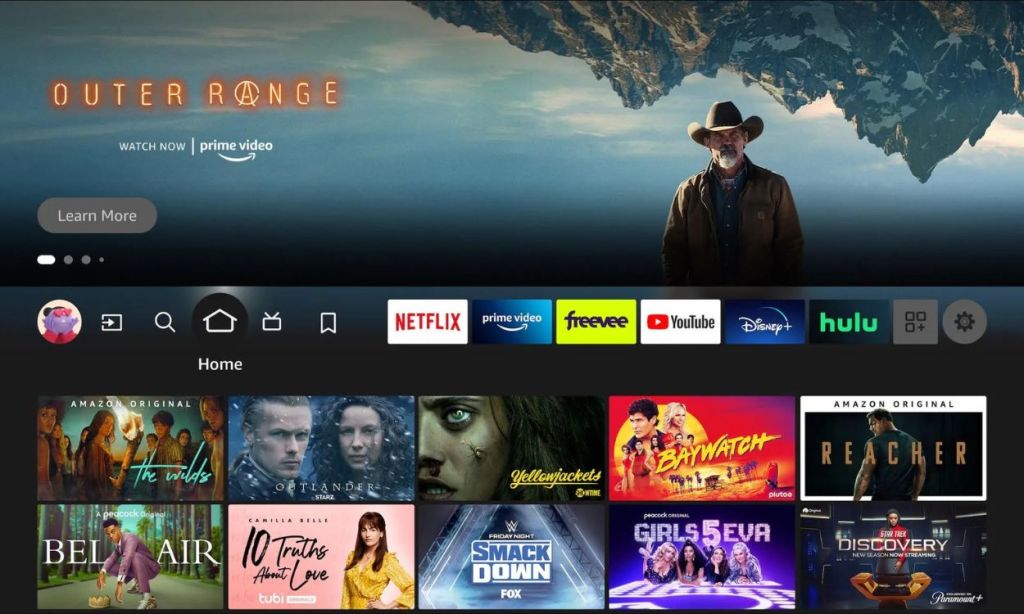
Roku, on the other hand, takes a more neutral approach by not pushing the recommendations too far and keeping them organic. This takes away from the essence of what “recommendations” should be, but that can be both a good and a bad thing. It’s good. Recommendations are more diverse and bad because sometimes the recommendations don’t feel incredibly personal. Roku doesn’t lean toward any particular service.
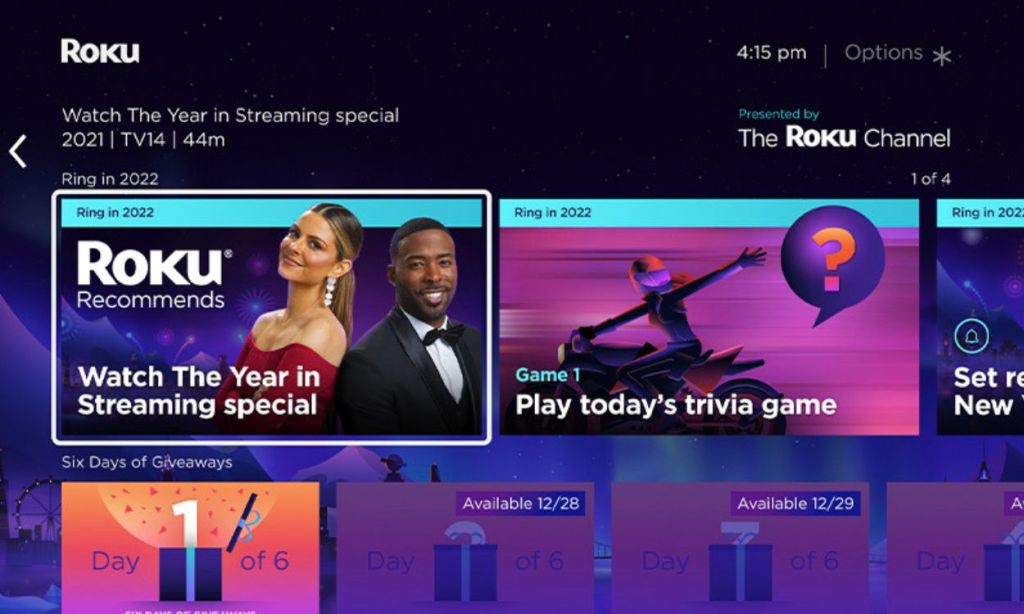
If you’re looking for more personalized recommendations, Fire TV will do the trick. If you’re not a big fan of recommendations and generally like them in moderation, you should go with Roku. That said, since most people love personalized content, Fire TV wins here.
Winner: Fire TV
Roku vs Fire TV: Apps and Features
Roku offers all the important and varied apps, which is everything you need to complete your viewing experience. Netflix, Hulu, Disney+, Amazon Prime Video, and all the other major streaming platforms are all available on Roku. The platform also offers channels where you can watch a variety of paid and free TV content.
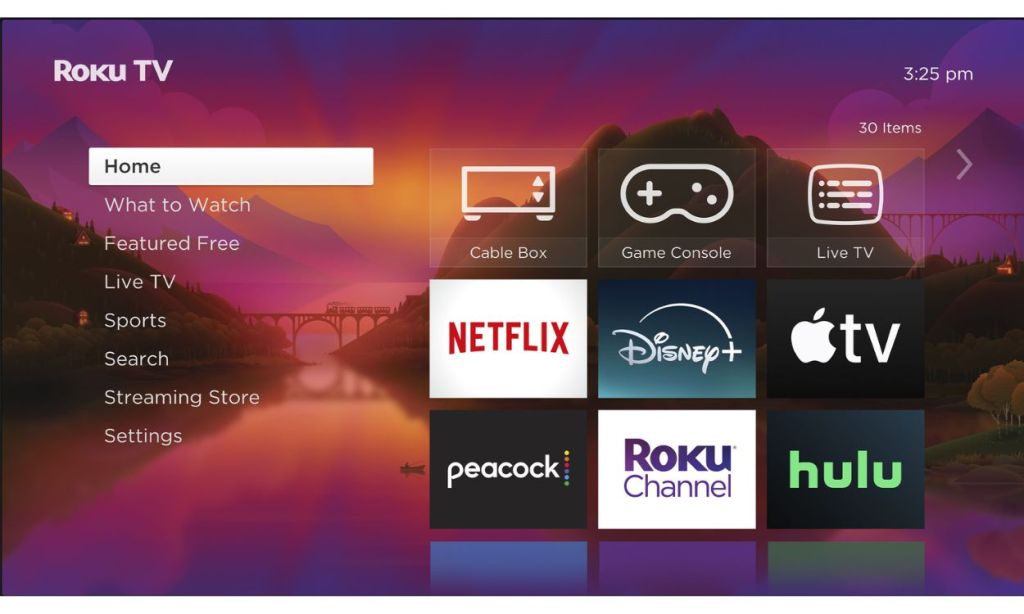
Amazon’s Fire TV, while tightly integrated with Amazon services, still has a wide range of apps. However, it can’t match Roku compared to its vast library of apps and channels, some of them quite niche but still popular. One area where Amazon is taking the lead is side loading since Fire OS is based on Android, you can download APKs and have apps that are not officially available on Fire TV.
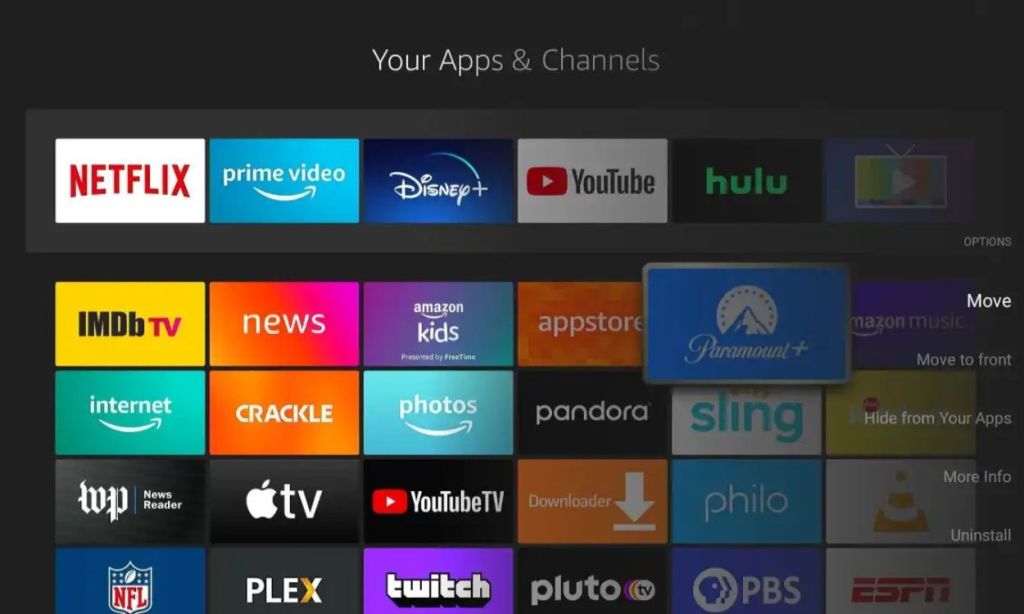
Roku supports Google Assistant and Alexa and is compatible with Apple AirPlay and HomeKit. Fire TV also supports AirPlay, but since it’s tied to the Amazon ecosystem, Google Assistant support is pretty limited, so you’ll have to use Alexa for the most part.
One thing I like about Roku, which I also mentioned in my Roku vs Google TV comparison, is headphone support (Ultra only) on the remote. This is a great way to watch content when you don’t want to disturb anyone in the room.
Winner: Roku
Roku vs Fire TV: Viewing Experience
Both platforms offer a similar streaming experience with support for 4K 60fps and features like Dolby Vision, HDR10, HDR10+, Dolby Digital, and Dolby Atmos. This of course depends on the Roku or Fire TV hardware you have. Both platforms also support upscaling to FHD and 4K from lower resolutions.
Therefore, the viewing experience should not be the main priority when choosing between the two as you would be hard-pressed to find the differences in the streaming quality.
Winner: Tie
Roku vs Fire TV: Devices and Prices
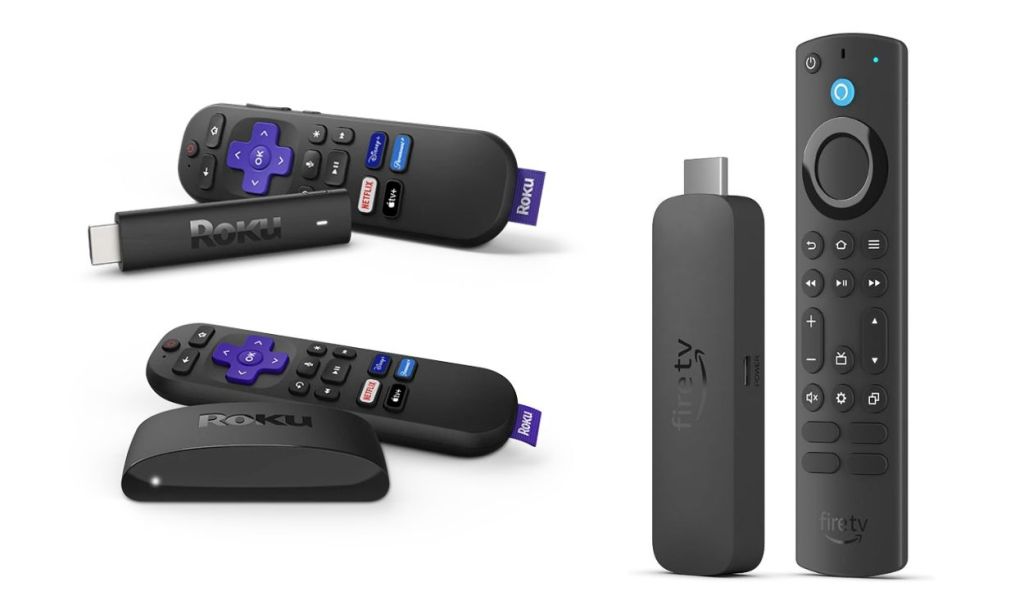
Roku currently offers four devices in its portfolio: Roku Express, Express 4K+, Streaming Stick 4K, and Roku Ultra. Amazon’s Fire TV portfolio consists of five products: Fire TV Stick, Fire TV Stick 4K, Fire TV Stick 4k Max, Fire TV Stick Lite, and Fire TV Cube. Here’s a full list of Amazon Fire TV and Roku devices you can buy and their prices.
| Amazon Fire TV | Roku | Price (Amazon vs Roku) |
|---|---|---|
| Fire TV Stick | Express | $25 vs. $20 |
| Fire TV Stick 4K | Express 4K+ | $30 vs $30 |
| Fire TV Stick 4K Max | 4K Streaming Stick | $40 vs. $35 |
| Fire TV Cube | Roku Ultra | $110 vs. $90 |
| Fire TV Lite Stick | – | $20 against – |
The Roku Express doesn’t have voice control, unlike the Fire TV Stick Lite and TV Stick. While the Lite and Express don’t offer volume controls, the TV Stick does, and that’s a good reason to spend the extra $5 on the TV Stick if content isn’t an issue. Additionally, both the Express and Fire TV Stick Lite can upscale from 720p to 1080p.
The Lite and Regular versions of the Fire TV Stick support Bluetooth, while the Roku Express does not. Additionally, the Express does not support HDR10 and HDR10+, which the Fire TV Stick Lite and the regular TV Stick support. However, Roku does support Dolby Atmos, which only the regular Fire TV Stick supports.
Ultimately, if all you care about is value for money and you want 1080p playback, it makes sense to buy the Fire TV Stick. If you need 4K, we recommend the Roku 4K Streaming Stick for its lower price. The Fire TV 4K Max has better overall performance, however, for $5 more.
Ultimately, the right platform depends on your current streaming situation and the ecosystem you operate. Which would you choose between Roku and Fire TV and their devices? Let us know in the comments below.
Read More:-







